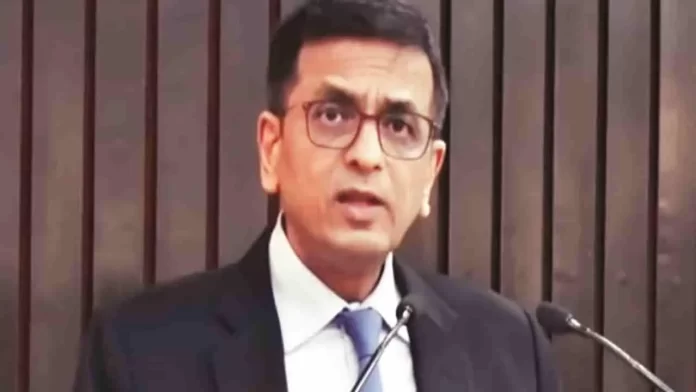Chief Justice of India DY Chandrachud has stressed on having a national-level recruitment process for the state judicial services, in order to widen the ‘domestic’ walls of regionalism and state-centred selections.
Speaking during the valedictory ceremony of the National Conference of the District Judiciary on Sunday, the CJI emphasized the need to standardise the recruitment calendar across the country to ensure that the vacancies were filled up in a timely manner.
Noting that the vacancy of judicial personnel stood at 28 percent and non-judicial staff at 27 percent at the district level, the CJI said that increasing the disposal-to-filing ratio hinged on attracting skilled personnel.
To ensure that disposal outweighed the institution of cases, the courts must work beyond the capacity of 71 percent to achieve 100 percent, he noted.
While deliberating on the criteria for the selection of judges, the conference said it was impiortant to standardise the recruitment calendar for all vacancies.
President Droupadi Murmu, who was the Chief Guest at the event, endorsed the idea of an All India Judicial Service in her Constitution Day address last year.
She had said that for IAS and IPS, there was an all-India examination. There should be an All India Judicial Service, which could select brilliant young stars and nurture & promote their talent from the lawyer level to the higher level.
The CJI said that the Committee formed to reduce arrears of cases, comprising Justice AS Oka, Justice Vikram Nath and Justice Dipankar Datta, has skillfully laid down an action plan for the purpose.
The action plan of the committee had three stages. The preparatory stage involved forming district-level case management committee to identify target cases, undated cases, and reconstruction of records.
He said the second stage, which was ongoing, aimed at resolving cases pending before courts for 10-20, 20-30 years or more than 30 years. From January to June 2025, the judiciary would execute the third phase of clearing backlogs pending for over a decade in courts, added CJI Chandrachud.
He said the effort required the coordination of various applications and data management systems to plan & track strategies. Some of the other strategies for dealing with backlog included pre-litigation dispute resolution, he added.
The CJI also highlighted the need to ensure that women working in the judicial field were made to feel welcome and included, which was often not the case when the atmosphere labelled biases against them.
He said there was a need to change the fact that only 6.7 percent of the court infrastructure at the district level was female-friendly. This was not acceptable today in a nation where at the basic level of recruitment in some states, over 60-70 percent recruits were women.
Expressing his happiness over the increasing number of women coming to the judiciary, the CJI said it was about time to confront biases the colleagues at the bar and bench had towards their female counterparts.
Being a judge at heart was a calling to dispense justice. It was important to consciously introspect that legal reasoning did not lead the mighty hand of the law to perpetuate existing prejudice, expressed the CJI.
He said the legal profession should holistically be accommodative and it must provide a safe and accommodating environment for all members of society, particularly the representatives of the marginalized sections of the society, such as women, Persons with Disabilities (PwDs), members of the Scheduled Castes & Tribes, and economically weaker sections.
President India Draupadi Murmu was the Chief Guest at the event. Supreme Court judge Justice Surya Kant, along with Union Minister of Law and Justice Arjun Ram Meghwal, were present on the occasion.


